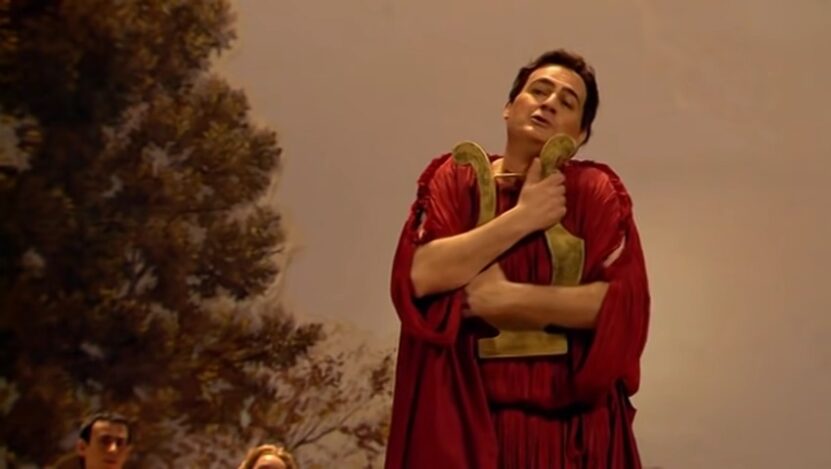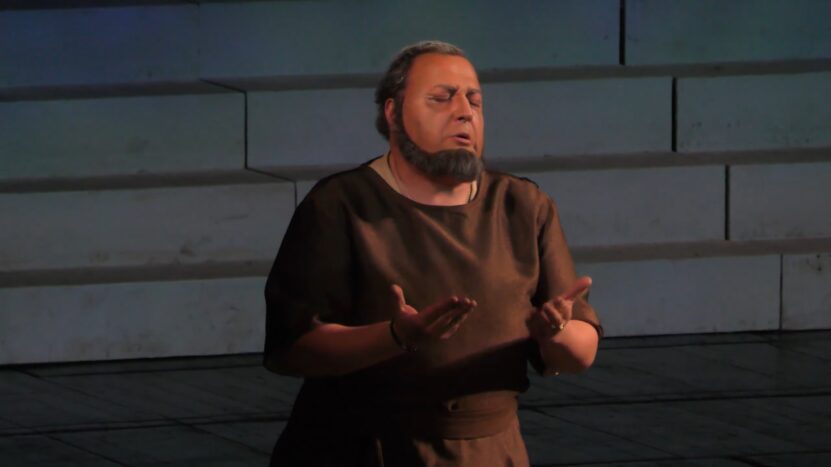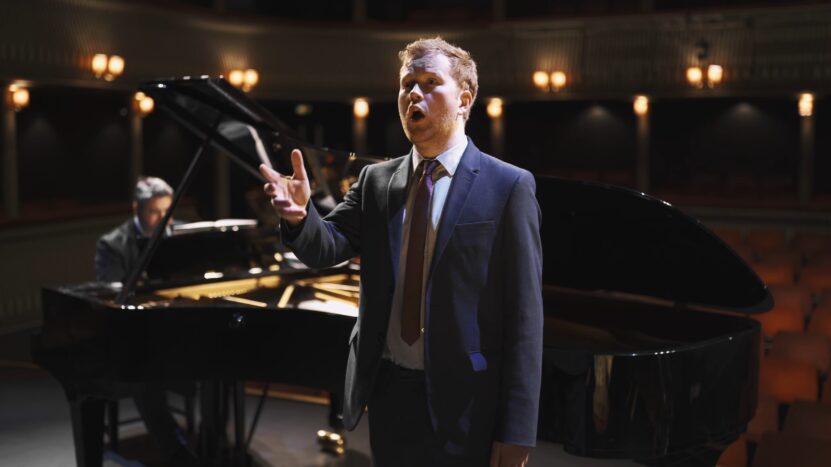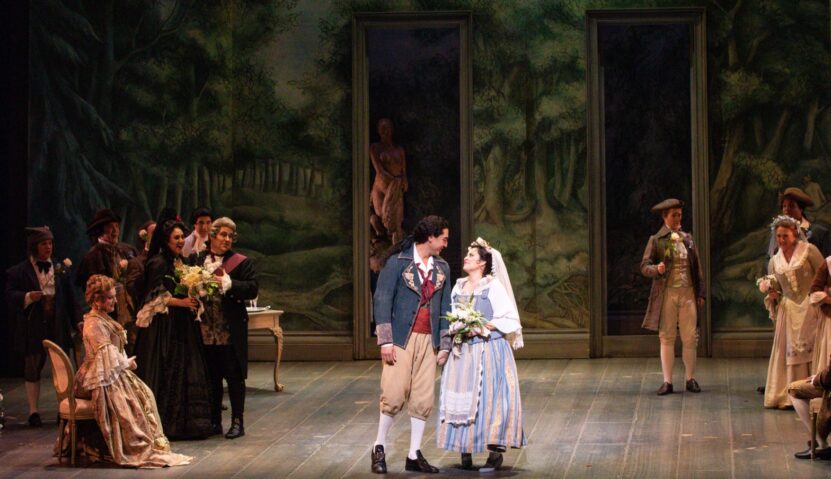Recitative, a term often cloaked in the mystical aura of classical music, stands as a pivotal yet sometimes misunderstood element in the vast ocean of musical forms. In this guide, we’ll break down the nature of the recitative, tracing its origins, evolution, and impact on the music world.
Historical Emergence and Evolution
The Genesis in Renaissance Italy
Recitative emerged during the late Renaissance in Italy. Its roots can be traced back to the efforts of the Florentine Camerata, a group of musicians, poets, and intellectuals who aimed to revive the musical-dramatic art of ancient Greece.
They believed that Greek dramas were sung rather than spoken, and in trying to replicate this style, the recitative was born.
The Marriage of Music and Drama
Recitative was initially developed as a narrative style of singing, used primarily in operas to mimic the natural rhythms and inflection of speech. Unlike the melodic and structured nature of arias, recitatives focus more on the text’s prosody, allowing for a more direct and expressive storytelling mode.
Early Composers and Works

Composers like Jacopo Peri and Claudio Monteverdi were pioneers in incorporating recitative into their operas. Monteverdi’s “L’Orfeo” (1607), one of the earliest operas, showcases the recitative’s power in driving the drama forward.
The Evolution Through Baroque and Classical Eras
- Refinement in the Baroque Era: In the Baroque era, the recitative saw significant development. Composers like Henry Purcell in England, and later Handel and Bach, used it extensively in their operatic and sacred works. The recitative in this era began to split into two types: ‘secco’ (dry) and ‘accompagnato’ (accompanied).
- Transition in the Classical Era: Moving into the Classical era, composers like Mozart and Beethoven continued to evolve the recitative. Mozart, in operas like “Don Giovanni,” used it to great dramatic effect, blending it seamlessly with the arias and ensembles.
- Beethoven and Beyond: Beethoven’s “Fidelio” represents a further evolution, where the recitative is used more freely and expressively, paving the way for the romantic operas of the 19th century.
Technical Aspects and Variations
Secco vs. Accompagnato
- Secco: Characterized by its minimal accompaniment, usually just a harpsichord or a lute, the secco recitative is closer to spoken dialogue. The sparse accompaniment allows more focus on the text and the singer’s expressive delivery.
- Accompagnato: In contrast, accompagnato recitative features a fuller orchestral accompaniment. This form heightens the emotional intensity and is often used in more dramatic or pivotal moments in an opera.
The Role of the Singer and the Orchestra

- Vocal Technique in Recitative: Singing recitative requires a different approach than arias, mezzo soprano, or choral works. The singer must be adept at dramatic expression, clear diction, and the ability to closely follow the natural rhythm of the language.
- Orchestral Support: The orchestra’s role varies depending on the type of recitative. In secco, the continuo (harpsichord or lute) provides a basic chordal accompaniment, while in accompagnato, the full orchestra may be engaged to add depth and color to the narrative.
Impact on Various Musical Genres
Recitative in Opera and Oratorio
- Driving the Narrative in Opera: In opera, recitative has always been a crucial element. It propels the story, provides context, and introduces arias and ensembles. Its adaptability to different languages and styles makes it a universal tool in opera.
- Oratorio and Recitative: In oratorios, a form popularized by Handel, recitative is used to narrate biblical or religious stories. Its ability to convey the story directly and clearly is pivotal in these works.
Influence Beyond Classical Music
- Recitative in Contemporary Music: While recitative is predominantly associated with classical music, its influence extends into contemporary genres. Musical theater, for instance, often uses a form of recitative in dialogue singing. Even in popular music, certain storytelling techniques can be likened to recitative in their focus on narrative and speech-like rhythm.
- Educational and Training Aspects: In music education, studying and performing recitatives can be a valuable tool for vocalists. It develops their ability to interpret text, understand musical phrasing, and express emotions effectively.
The Role in Modern Vocal Training

Developing Musical Interpretation
Learning recitative is crucial for vocal students, especially those focusing on opera. It teaches them to interpret music and text simultaneously, understanding the importance of delivering each word with appropriate emotion and emphasis.
Improving Diction and Expression
Recitative singing hones a singer’s diction and phrasing. Since the style is close to spoken language, singers learn to articulate clearly and expressively, a skill beneficial in all forms of singing.
Versatility and Adaptability
By mastering recitative, singers gain versatility. They learn to adapt their voices to different styles, from the minimalist approach of secco to the more dramatic accompagnato, and this versatility is invaluable in a wide range of musical careers.
The Role in Music Education and Appreciation
Music Evolution
Recitative offers a lens through which to view the evolution of musical styles and forms. By studying its development, students gain insights into historical shifts in music, from the Baroque to the Romantic era and beyond.
Appreciating Dramatic Context
Learning about recitative helps students appreciate the dramatic context of operas and oratorios. Understanding how music and narrative intertwine enhances the appreciation of these works’ complexity and beauty.
Global Perspective on Music
Recitative, with its roots in Italian opera but its influence felt worldwide, provides a global perspective on the history of music. It illustrates how a musical form can transcend its origins and adapt to different cultures and languages.
Enhancing Musical Analysis Skills
- Analyzing Text and Music: Students learning about recitative develop skills in analyzing both text and music. They learn to see how composers set words to music in a way that enhances the text’s meaning and emotional impact.
- Knowing Composer Intentions: Studying recitative allows students to delve into a composer’s mind, understanding their intentions and how they use music to convey emotions and narratives.
- Connecting Music with Other Arts: Recitative serves as a bridge between music and other arts, particularly literature and theater. This interdisciplinary approach enriches a student’s overall understanding and appreciation of the arts.
FAQs
Can recitative be found in non-Western music traditions?
While it is primarily a Western music concept, similar storytelling techniques can be found in non-Western traditions. For example, in Indian classical music, there’s a narrative style called “Kathak” where music and spoken word blend in a manner akin to recitative.
How does recitative differ from spoken dialogue in musical theater?
It differs from spoken dialogue in its musicality; it follows the rhythm and inflection of speech but is sung to a musical accompaniment. In contrast, spoken dialogue in musical theater is purely speech without musical accompaniment.
Are there famous singers known specifically for their recitative performances?
While there are no singers famous solely for it, many opera singers renowned for their overall performance, like Luciano Pavarotti or Maria Callas, are celebrated for their exceptional delivery of recitative, showcasing their expressive and dramatic skills.
Is recitative ever used in film scores or soundtracks?
Yes, it can be used in film scores or soundtracks, usually in opera-based scenes or to create a dramatic, narrative-driven atmosphere. However, it’s less common than other musical forms in this context.
Has the role of the recitative changed in contemporary operas?
In contemporary operas, its role has evolved to blend more seamlessly with other musical elements. Composers often use it in innovative ways, integrating it into the musical fabric to create a more cohesive and fluid narrative structure.
Can recitative be effectively performed by amateur singers?
Yes, amateur singers can perform it effectively. While it requires good diction and expressive skills, its closer resemblance to speech rather than elaborate melody makes it accessible for less experienced singers to learn and perform.
Concluding Thoughts
As we’ve seen, the recitative holds a place of honor in the history of music. From its origins in the late Renaissance to its manifestations in modern musical forms, recitative has continuously evolved, influencing and enriching the musical landscape.
Its unique blend of narrative potency and musical expressiveness ensures that it remains a vital and vibrant tool for composers and performers alike. In the ever-changing world of music, the recitative stands as a testament to the timeless interplay between words and melody, between narrative and expression.
It reminds us that at the heart of every great musical piece lies a story waiting to be told, and it is through forms like the recitative that these stories come to life, resonating with audiences across ages and cultures.

